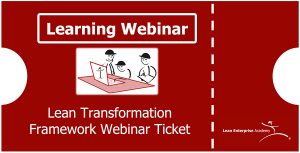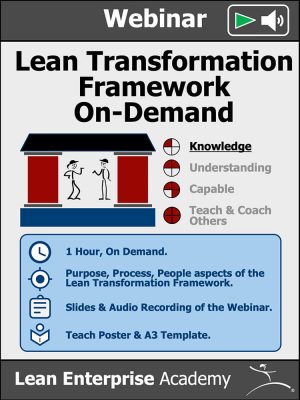Lean Transformation Framework Webinar Questions and Answers
During our most recent webinar on Lean Transformation Framework (LTF), we were asked some key questions around the LTF that we thought would be helpful to share with the Lean Enterprise Academy community. The questions & answers in this article were taken from our LTF session that ran on the 19th January 2022. The bottom of the article also includes some useful learning materials based around the LTF. The session was hosted by our CEO David Brunt and Senior Lean Coaches David Marriott and Peter Watkins.
What’s the difference between Lean Six Sigma and the LTF?
Lean Transformation Framework Questions: Leaders need to be developed in order to change their habits…At the beginning there’s a need for training coaching from somebody outside. What approach would you recommend? Black belts?
David Brunt:
Definitely not black belts. The idea of Lean Six Sigma is an oxymoron. It’s like “old news or “only choice”. They’re like oil and water because they are fundamentally different the way in which they’re done. The Six Sigma approach is about experts coming in to solve your problem. Whereas the lean approach is about everybody at their level, and the organisation helping everybody at their level to develop the capability to be able to solve their own problems.
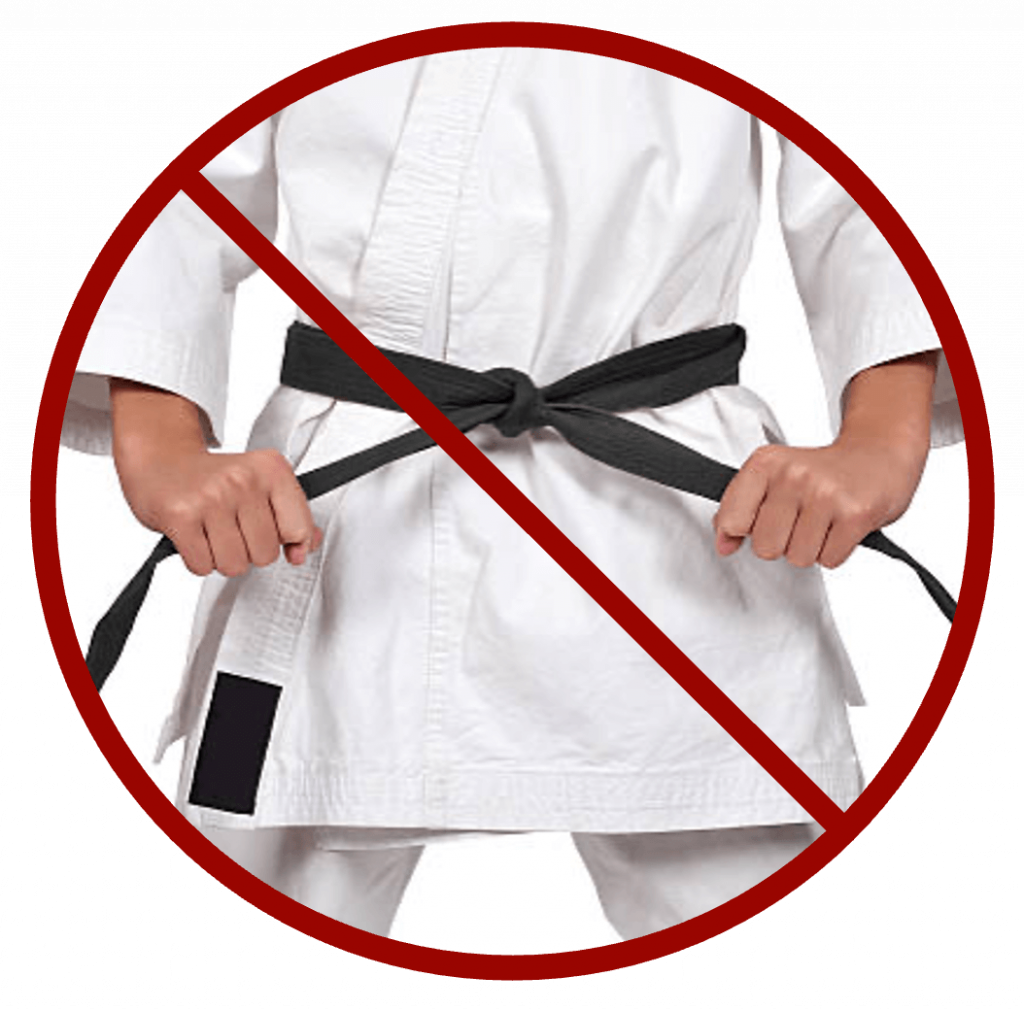
Those two things are fundamentally different and that’s why it’s so important in the lean transformation framework to have that the question about what’s your underlying thinking. If your underlying thinking is that experts solve problems, you go down a completely different approach to this. And when the consultant comes in and says “we’re going to blend the best bits of lean with the best bits of six Sigma”, what you have to ask yourself is what is the underlying thinking behind that approach? Is it everybody solving the problems? In which case why do you need different grades of black, yellow, and green belts.
Leaders really need to develop to change habits, yeah absolutely. These five fundamental questions are designed to get them to think through each one of those five dimensions for their level. If you’re dealing with a chief exec which is what the what the case is about (in the webinar session) then it’s at a company level, but you can equally do this at a team member level.
When should I use the LTF versus Kata?
Lean Transformation Framework Questions: I’m a big fan of the kata approach for involving teams to solve problems. When should I use LTF vs kata?
David Brunt:
The LTF is a set of questions which you can apply to a whole organisation. The case that I went through in the webinar) was working with an owner and a COO was to transform their organisation; 22 different sites, sales, service, parts activities, deliveries, body repair, preparation of used cars and 1067 people. Equally you can apply the same questions just to the guys doing the two guys working on the car do while you wait servicing.
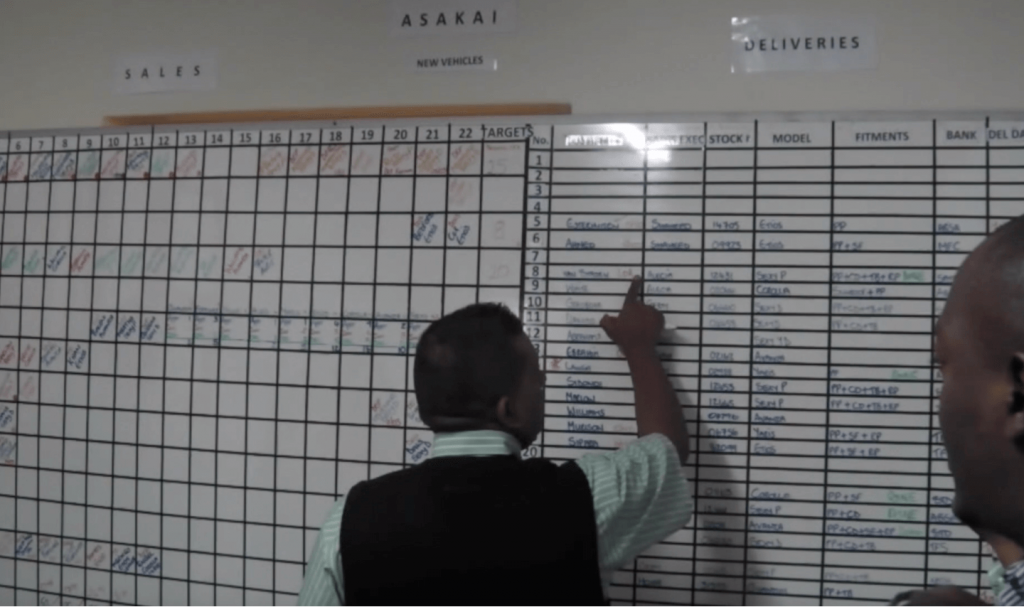
What’s the problem you’re trying to solve? What’s the work to be done? How do we develop capability to actually service these cars quickly while customers wait? What’s the management system we need? We need to be able to see whether behind or ahead. If these cars were all coming out at once every 10 minutes, they’re coming off a station. So what’s our management time frame and what’s the management system to be able to see whether we are behind or ahead? What do we do when we get behind? Because there is another car coming with another customer How do we manage all of that? What leadership behaviours do we need so that we keep that flow going? Then what’s the underlying thinking relating to all that?
So, it’s a fractal thing. You can use it in the parts, sales department etc. That sales guy can use the same set of questions. The Kata piece, there’s nothing wrong with that. If you say that your countermeasure, is that you want to get people as part of their underlying thinking having a scientific method, then having a routine for a set of questions to ask – that’s a worthwhile experiment in an organisation to try and see whether that then closes those gaps.
David Marriott:
It falls into the capability, it’s coaching capability for the leader, and a routine for them to follow. Then also for the individuals that they’re coaching. So, if the problem to solve is to develop capability on coaching, then that’s a proven method, and a reasonable one to follow.
Peter Watkins:
You’ve got to be careful not to jump on methods without thinking about, as Dave said, what’s the problem we’re trying to solve? We can give an example of a customer we are working with. They want to engage their team members more in doing improvement activity, they want to engage everybody. Their engagement levels are very low today. They don’t have team working in place.
Team members are not involved every day in making improvements. So, you really need to think about what we need to put in place to make that happen under those five questions. They (the organisation) have no structure, and they don’t have clear roles and responsibilities. We can’t jump to Kata if we haven’t got team leaders, or the right ratios, or their roles and responsibilities aren’t clear, or we haven’t got a performance management system to highlight what the problems are.
Peter Watkins:
There’s no point coaching people to make improvements when we don’t know what the problems are to solve. We need a good performance system that highlights the problems, then we can start coaching people on solving those performance problems first, before we jump to try and make improvements. It depends on where you are and what your situation is. If you’ve got people engaged already and you just need your team leaders to be better coaches of improvement, then Kata is great.
I got trained in Kata – where the company was making toilets for mobile homes! But we were coaching the team leaders to have a better method by asking five questions to get people engaged more and understanding what they are doing on improvements. So, for that particular thing that’s great, but you’ve got to really think through using the questions. Where are we with that? Have we started that? What do we need to put in place structurally to solve that problem? so I don’t think it’s as easy as jumping to one method. That’s just one part of the puzzle, there may be other things you need to do to enable that to happen.
Are lean maturity assessments useful?
Lean Transformation Framework Questions: Do you use a kind of maturity level model to understand the current state?
David Brunt:
What you are doing on each one of these 5 dimensions is you’re asking what on the surface is a basic question – “what problem are we trying solve?” and “how do we do and improve this work to solve this problem?”. Those are open questions. Then what that does stops you from getting into the cutter cookie approach of saying “we need 5S everywhere”. And “all of our visual boards should all be exactly the same”.
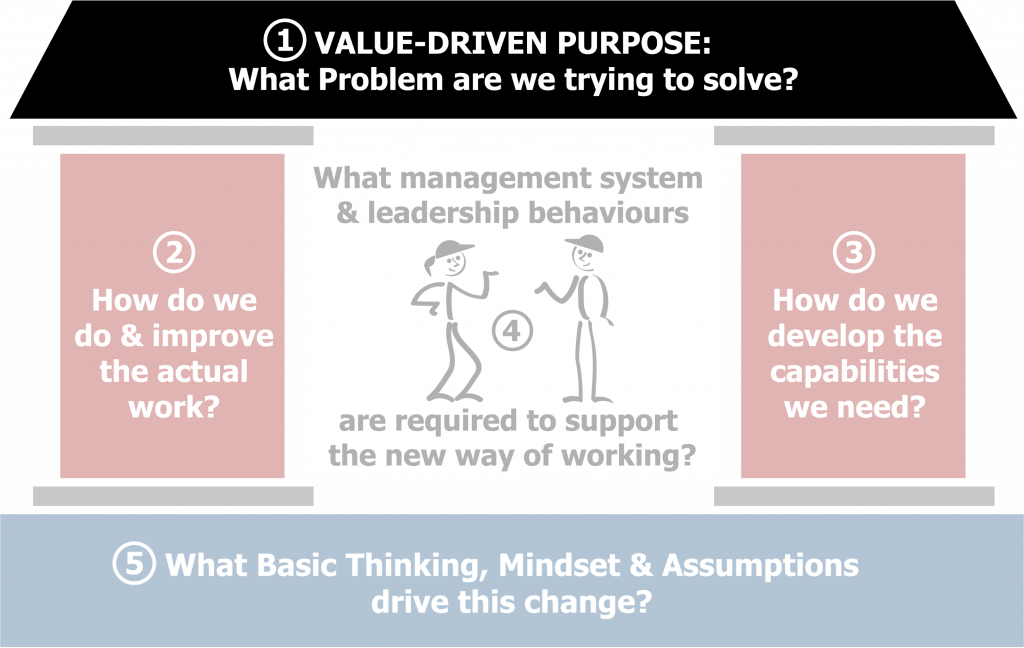
What you’re doing is you’re asking a very generic question, but it takes a lot more thinking about. The second part then after having thought about that quite open question is “what’s the current state?” and “what is my future state by a certain particular time?”. Therefore “what’s the gap for me to close on each one of those five dimensions?”.
David Brunt:
Lots and lots of lean teams have got maturity models where they’ve basically worked out all the things that people should be doing by certain levels. We’re not saying that’s inappropriate, but what we’re saying is quite often that way of thinking stops people from focusing on the problem they’re trying to solve, because what they’re trying to do is get to the next level, or pass an audit.
Are you trying to get some accreditation? Or are you trying to put a system in place to expose problems? Which one is it? is it both? Hopefully it’s both. When I see those maturity models that all the consultants have put in for the lean teams, the first question that I always ask is “what problem are you trying to solve?” and “do those things help you close that gap?”. If they do, then that’s fantastic carry on, but if they don’t then could you be spending your time in a much more productive way.
How does the LTF help with those who resist change?
Lean Transformation Framework Questions: In step 5 (the foundations of the LTF), should you also consider mindset assumptions that resist the change?
David Brunt:
In the case study (in our webinar session), I give a couple of examples of things from the environment in which the case study is in. I think that will make it pretty clear for basic thinking, mindset, and assumptions. But I think you’re right. If you don’t really think about the underlying thinking that people have, when starting out this process, you can easily derail yourself.
David Marriott:
It’s a bit like when you’re young, or coming out of school/university and people are saying “what do you want to do as a career? or in this case “what are the mindsets and assumptions do we want?” Well, that’s quite hard to answer! But if you flip that round and ask, “what things do you NOT enjoy doing as a career/job?” or “what mindset/thinking do we NOT want to see?”, it’s probably easier to answer those questions and start from that point of view. So, it’s a good starting point to say, “What are the behaviours, mindsets and assumptions we DON’T want to see in the organisation?” and counter that with the things we do what.
It’s similar to when you’re young, or coming out of school/university and people are saying “what do you want to do as a career? or in this case “what are the mindsets and assumptions do we want?” Well, that’s quite hard to answer!

But if you flip that round and ask, “what things do you NOT enjoy doing as a career/job?” or “what mindset/thinking do we NOT want to see?”, it’s probably easier to answer those questions and start from that point of view. So, it’s a good starting point to say, “What are the behaviours, mindsets and assumptions we DON’T want to see in the organisation?” and counter that with the things we do what.
Does TPS meet external ISO audit requirements?
Lean Transformation Framework Questions: Have you ever seen a good example of a TPS system which also covers the requirements of external ISO auditors?
David Marriott:
If you’ve got a good production system, you’re going to fulfil the requirements of the ISO audits. If you’re going to apply TPS/lean anyways, you’re going to automatically fulfil those requirements and exceed them. It’s a minimal expectation. I wouldn’t have much reservation in thinking “if we are going to go down this route, we’re not going to fulfil the audits”. You’ll have no problem in doing that.
Peter Watkins:
We had a good example recently from one organisation. They’ve got an ISO process, but it seems quite basic. Pillar two (of the LTF) describes what the work is. The work needs to be at a level of detail. For example, if I was just starting, I could follow what the work is. A lot of the ISO level processes and procedures don’t do it at that level of detail But some do and are over descriptive!
Peter Watkins:
One example we had where an organisation thinks “we have process that’s great”. The process was chasing up bad debtors. They checked 6 boxes and that was the process, but they didn’t describe what the work was. We ended up mapping the process out and defining what the work was. There were 66 steps in the process with many decision points, it was very complicated. You must have a good balance.
The intention of ISO is very good, which is to create your process and it does align to achieve your purpose. But it’s then how you execute on that. How you are describing the work and how you are doing that. If it’s done by people in offices that aren’t even doing the work, and is just written down by them and not managed by them day-to-day without a performance system to maintain your standard, I think it’s a bit of an issue. However, if you do all the things right in the lean, it should not be an issue for ISO. In fact, you’ll probably blow the socks off the auditors!
Want to attend this webinar?
The Lean Enterprise Academy is hosting the Lean Transformation Framework webinar again on the 15th June at 3:30pm. If you’d like to learn more about the webinar click here.
Alternatively, if you would like to rollout a live group session within your team/organisation on the Lean Transformation Framework (or anything else), LEA can support you with. We’ve found that private sessions stimulate discussion and interest, as well as provide good levels of engagement within the team. Contact us here to find out more.
LEA Materials around the Lean Transformation Framework
Lean Transformation Framework On-Demand Webinar
We offer an on-demand version of the webinar which gives you access to a one hour recording. In addition you’ll be able to download the materials used in the session, which includes a teach poster, the presentation slides, a transcript and an A3 template.
All the webinars and courses available on our website are based around the Lean Transformation Framework. We are also developing materials every month. If you’d like to access all of our learning courses and on-demand webinars, we have made them all available on our Learning Platform Subscription for a low yearly cost of £119.99 for individuals (for Enterprises contact us here). Learn more about the subscription here.
Lean Houses for Dragons
In her new book, Sharon Visser writes about her four-year journey and offers some great reflections on the series experiments done in a retail motor dealership – Halfway Toyota, whilst using lean thinking & practice. If you want to learn more about the book, the author discusses her book in further detail on planet lean. Watch the trailer for the book below:
-
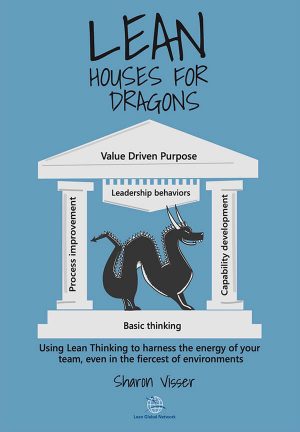 Lean Houses for Dragons£17.99
Lean Houses for Dragons£17.99
We are also in the process of creating a course around the Lean Transformation Framework. The course will be based on our Lean Transformation Framework level 1 teach poster so you learn about the LTF in terms Purpose, Process and People. Our level 2 teach poster and supporting facilitation guide are also being developed and will be available as physical copies to purchase in our shop soon.
